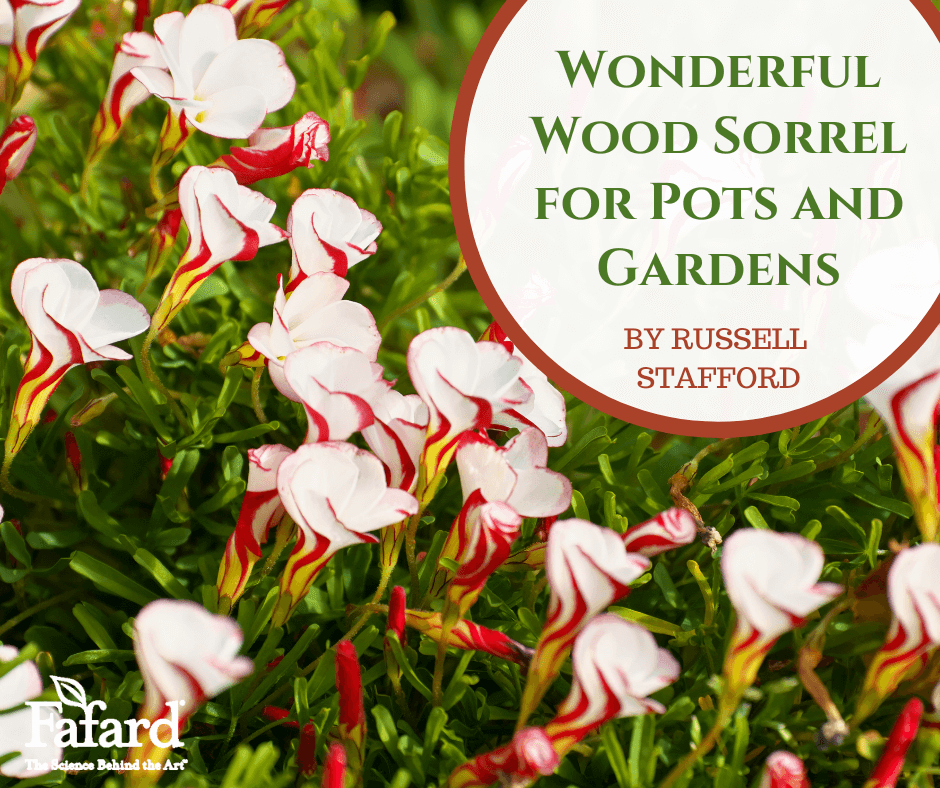
Wood sorrels – known botanically as Oxalis – include some of our most familiar and most annoying garden weeds. But this circumglobal genus has its good side too, encompassing dozens of outstanding garden and greenhouse plants.
Saint Patrick’s Shamrock
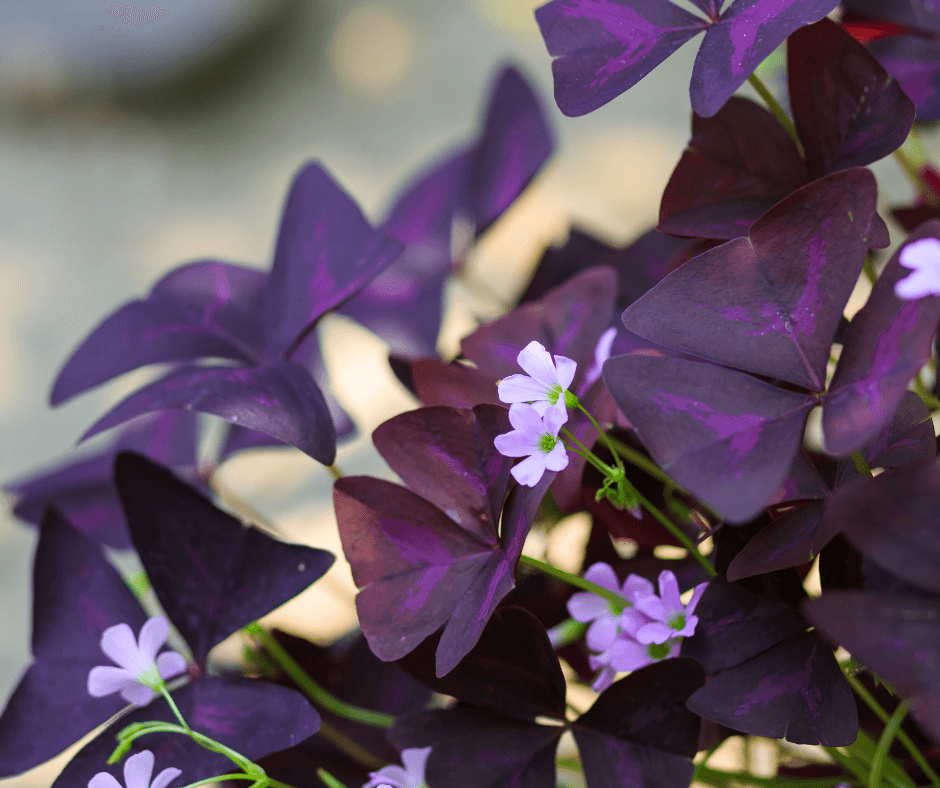
One such Oxalis makes a ritual appearance in many upscale grocers, garden centers, and other similar locations around St. Patrick’s Day, where it’s sold by the thousands as Irish “shamrocks”. With its bold three-lobed leaves – resembling an oversized clover – false shamrock (Oxalis triangularis, sometimes listed as Oxalis regnellii) absolutely fits the part. This native of rocky streamside habitats from Brazil to Paraguay is anything but Irish, however. It’s also not a clover, belonging to an entirely different branch of the plant family tree. Still, it makes a splendid, long-lived container plant (and faux shamrock), both in its green-leaved form and in enticing variants, such as purple-leaved subsp. papilionacea and silver-splashed ‘Irish Mist‘.
All forms of the species produce year-round flushes of lush foliage and pinkish flowers, arising from scaly underground rhizomes that resemble miniature pinecones. An easy keeper, Oxalis triangularis favors semi-shade, moderate water, and a relatively porous, humus-rich potting medium such as Fafard Professional Potting Mix. It often does well with a dryish rest in winter, mimicking seasonal conditions in its native haunts. It’s also remarkably hardy as a garden plant, surviving winters as cold as USDA Hardiness Zone 7.
Iron Cross Sorrel
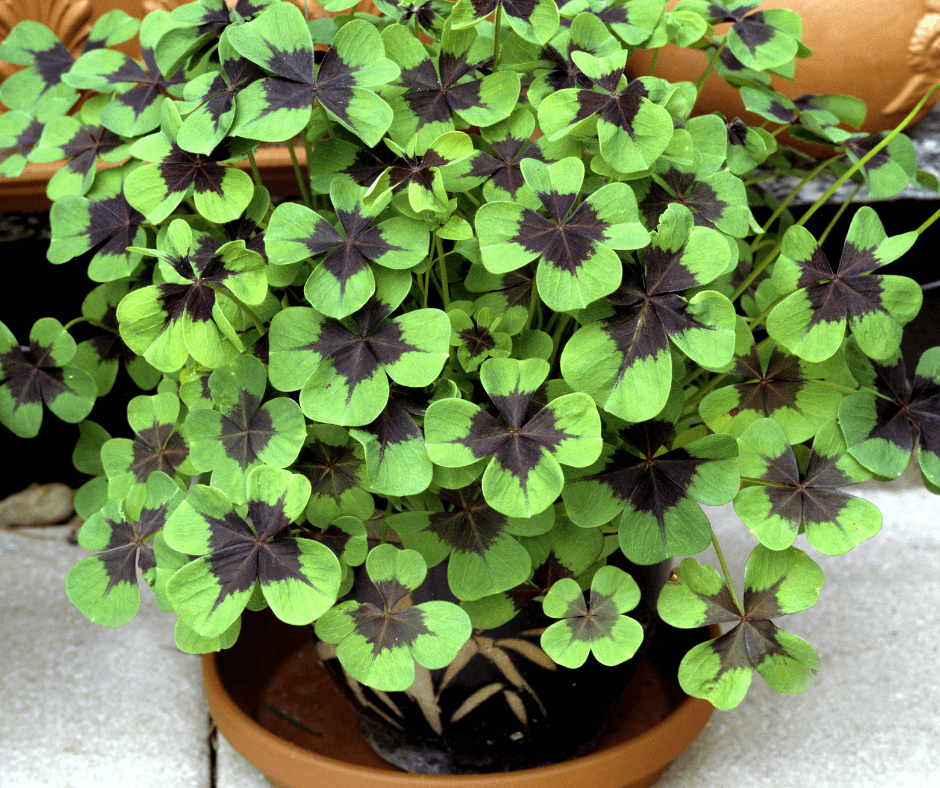
A couple of other Central and South American species sometimes turn up in garden centers and catalogs. Noteworthy for its bold four-parted leaves, Oxalis tetraphylla is commonly grown in its “iron cross” form, with bold purple blotches marking the base of each leaflet. A summer-grower, it gives a good show in a planter, pot, or in a partly shaded garden niche in Zones 8 to 10, sending up sprays of bright purple-pink flowers from July onward.
Silver Shamrock
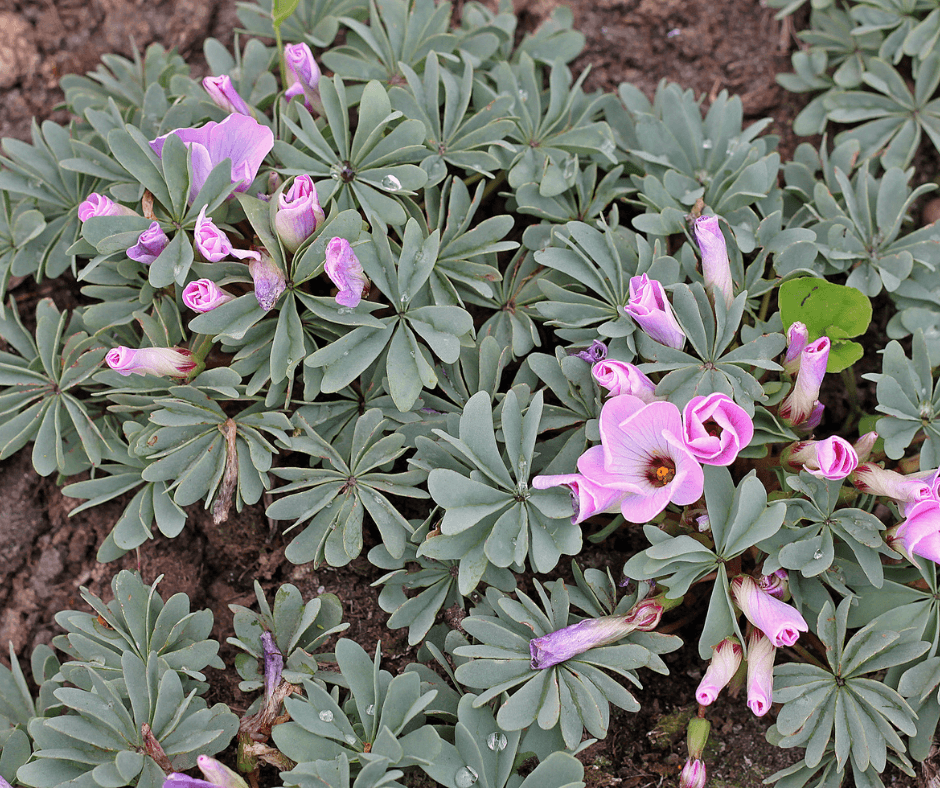
Silver false shamrock (Oxalis adenophylla (Zones 7-9), from high altitudes in Chile and Argentina, is another South American species often sold in catalogs. It is a bit of a mystery, considering its trickiness in cultivation. It needs relatively mild winters and cool summers to succeed, or a reliable snow cover in cold-winter areas. Give it porous soil in any case, to mimic the gravel slopes it calls home.
South African Sorrels
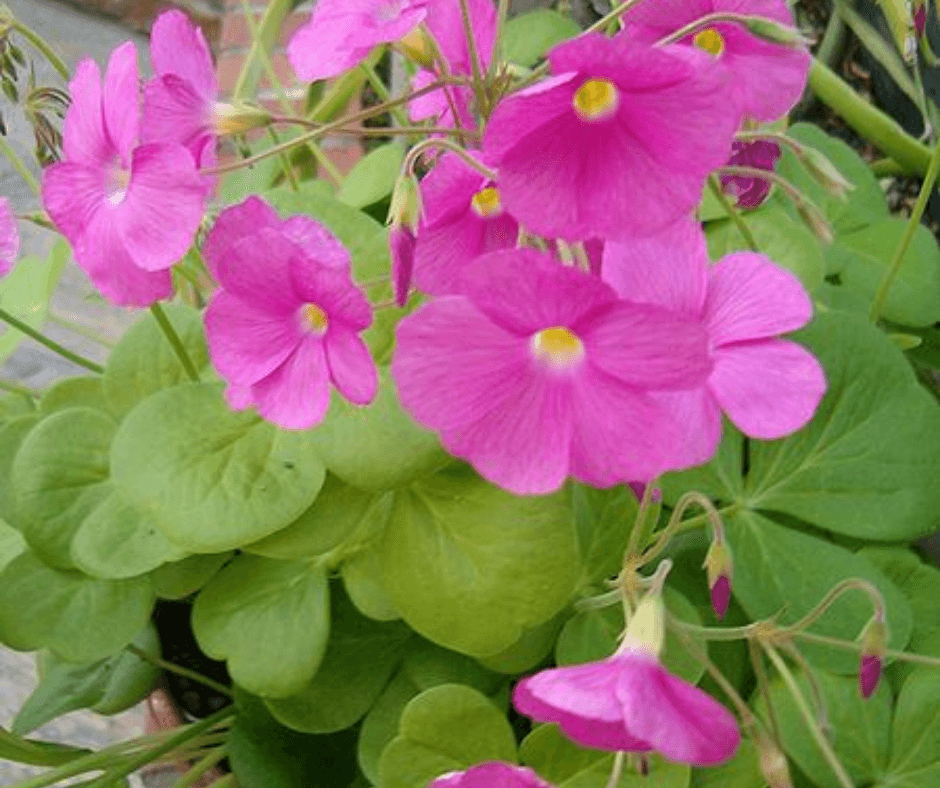
Ornamental Oxalis species have their epicenter in another sub-equatorial region – the South African Cape. Dozens of Oxalis, with flowers and foliage in a rainbow of beguiling hues, come from this florally blessed locale. Almost all South African forms are winter-growers, arising from small underground bulbs in mid-to-late fall and flowering for weeks or months before returning to dormancy in spring. Ample sun, relatively cool air, and not overly moist soil are their only requirements, whether grown in a pot or in a favorable garden climate (such as coastal California). They can go entirely without water during their summer dormant period. Notable South African species include:
- Bowie’s wood-sorrel – Oxalis bowiei, whose clumps of large leathery rich-green “shamrocks” give rise to rose-pink flowers in late winter and spring.
- Compressed wood-sorrel – Oxalis compressa, which produces bright yellow flowers in winter over mounds of clover-like leaves. The cultivar ‘Pom-Pom’ has fully double flowers like miniature chrysanthemums.
- The shrubby Oxalis livida, whose botanical name refers to the liver-purple tinge of its finely divided leaves.
- Yellow-eyed sorrel – Oxalis obtusa is an amazingly diverse species that flowers for many weeks in mid-to late-winter in colors ranging from white to pink to purple to yellow.
- Palm-leaf sorrel – Oxalis palmifrons is named for its glistening silver-furred leaves that do indeed resemble tiny palm fronds.
- Purple sorrel – Oxalis purpurea, which rivals Oxalis obtusa in the color range of its dazzling yellow, pink, purple, lavender, or white flowers.
- Candy cane sorrel – Oxalis versicolor is named for its appearance when its white, red-edged petals are furled. As with all South African oxalis, the flowers open wide only in bright sunlight.
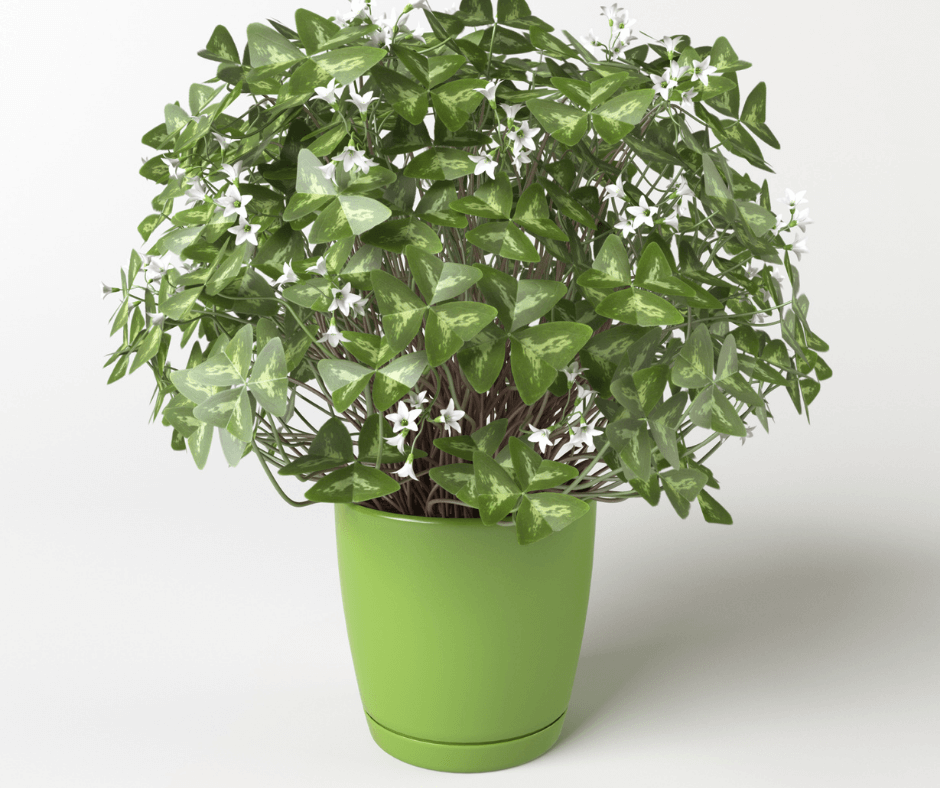
Cold-Hardy Sorrels
A few ornamental oxalis are suitable for cold-climate gardens. The plant often sold as pink wood sorrel (sometimes named Oxalis crassipes or Oxalis rosea, but actually a form of Oxalis articulata (no matter)) is one of the best ground covers for sunny or lightly shaded Zone 6 to 9 gardens. It spreads gradually into lush clumps of typically oxalian clover-like leaves, spangled much of the growing season with rose-pink flowers. A white-flowered form is also sometimes available and well worth seeking out.

For sunny to partly shaded rock gardens, troughs, and other similar settings in Zones 4 to 8, there’s the U.S. native violet wood sorrel (Oxalis violacea), which is found in prairies, ledges, and other dryish habitats from the Eastern Seaboard to the Rockies. It’s a delightful little thing, forming tufts of purple-flushed mini-shamrocks, studded in late spring with pink flowers. The rarely available mountain wood sorrel (Oxalis montana), from uplands of the eastern U.S., is similar to Oxalis violacea in appearance but more vigorous in growth if given a cool shaded niche with humus-rich soil in Zones 3 to 7. Curiously, it’s rarely offered in nurseries, despite its ability to form attractive ground-covering clumps of dainty foliage.
Golden Sorrel
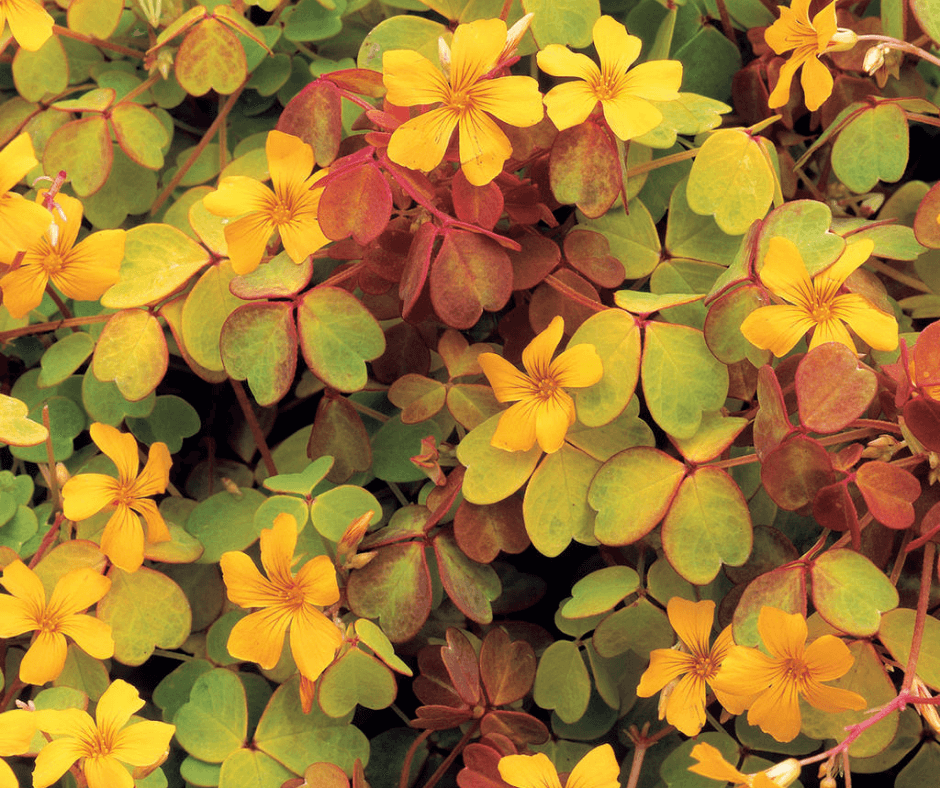
Two cheerful varieties of golden sorrel (Oxalis spiralis) have become quite popular for container plantings. These are the dark-burgundy-leaved Zinfandel™ and the brilliant orange-purple-and-yellow-leaved Molten Lava™. Both plants form low-growing mounds and develop yellow flowers in summer. They are hardy in Zones 9-11.
Whether for greenhouse or garden, ornamental Oxalis have plenty to offer in the way of handsome colorful foliage and charming and often dazzling flowers. Wood sorrels are so much more than weeds – or St Patrick’s Day curiosities.

